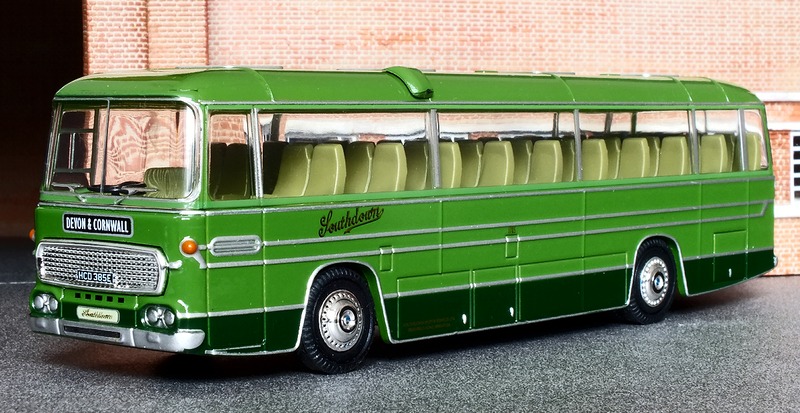Construction wise the model body is a mix of plastic & diecast metal, plastic is used for the baseplate & upper body.
Once again Oxford has over painted the clear plastic to produce the roof panels and window pillars, this method allows a good to scale reproduction of the thin support pillars.
The lower body has quite a high metal content & this results in quite weighty feel to the model.
Lights are all cast features on the lower body, all have been over painted to represent the lens colours. There are no mirrors as per usual for Oxford models, but silver painted front windscreen wipers are features cast into glazing.
Most other body details, such as the locker & rear emergency door handles are either over painted cast features or tampo printed. This method is also used on the front to reproduce the bumper grille & black air intakes below the main grille.
The destination display is tampo printed directly onto the front panel, this is acceptable given the that different operators fitted various sizes & layouts.
Nit picking there are a few issues however, firstly the front windscreen doesn't appear raked back enough and results in a rather flat front profile, the wheel arches are also noticeably flayed out to towards the lower edge & the tops have an odd downward slope towards the rear, the real vehicles appear to have had much more vertical sides to the arches and these certainly don't match those found on the Southdown vehicles at least.
Finally the roof centre is rather flat on the model, pictures suggest a more round profile was present of the real vehicles.
Interestingly, the line art originally issued by Oxford when the model was first announced shows a much greater windscreen rake, less flayed wheel arches & a deeper roof.
The real coaches also appear have had lower side panels that had a very subtle inwards tapper towards the bottom edge, this feature is also absent on the model giving it a rather square look.



